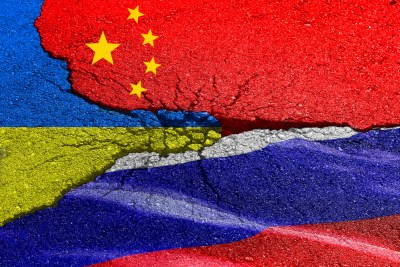
China’s attention to the war in Ukraine continues to pick up steam. Beijing recently pledged its “extreme interest” in ending the war and proposed its 12-point “peace program” amid a flurry of diplomatic activity.
Though the proposal is typically vague and light on details, it represents a capstone in China’s recent campaign to promote its “wisdom in global security.”
Also read: China wins the mediation medal
Of course, Beijing’s desired outcomes in Ukraine are greatly different from Washington’s. It has pledged a “no limits” partnership with Moscow, it has contemplated sending military aid to Russia’s war effort, and its proposed program includes none of the key desired outcomes in President Volodymyr Zelensky’s ambitious stipulations for an end to the war.
Its proposals also fall well short of a credible resolution of the conflict. But President Xi Jinping is seeking to create at least the appearance of neutrality, and China would benefit if it were cast as an important broker of peace.
Right now, China’s proposals may seem unlikely to gain any significant traction. However, in a “long war” scenario, calls for peace will become increasingly attractive in the court of global public opinion.
China may be able to enlist other powers (such as Brazil, Mexico, India and South Africa) that have resisted aligning with Washington into a so-called “peace club” calling for negotiations.
Chinese diplomacy has also produced a recent surprise in brokering an agreement between Iran and Saudi Arabia to normalize their diplomatic relations, leading many to notice Washington’s absence from the diplomatic process.
Unfortunately, rather than any current peace initiative, the battlefield will determine the shape of political outcomes in Ukraine in the coming months. American military aid has saved millions of Ukrainians from a brutal Russian occupation, and perhaps a major Western aid push will drive a major breakthrough, leading to a Russian retreat.
But it appears equally likely that a rough stalemate could take shape, with Russia having fortified its defensive lines and learned lessons from the sweeping Ukrainian counter-offensive last September.
Mutual attrition and challenges with mobilization, extremely difficult battlefield conditions, and both sides’ inability to capture large swaths of territory at this stage all suggest that relatively static and bloody fighting could remain the status quo without diplomatic intervention.
This state of affairs increases the risk of dangerous escalatory gambits in an attempt to break through the stalemate, including the use of nuclear weapons.
Ultimately, forecasts of military outcomes are highly fraught, and Washington should be prepared for multiple outcomes. That is why Washington’s contingency planning for negotiations in the absence of complete Ukrainian victory should begin now.
As the key supplier of aid to Ukraine and the leader of the international sanctions regime, American presence in a political settlement is a necessary condition for the durability of any deal.
Such an agreement could eventually offer partial sanctions relief to Russia in exchange for measures that protect and secure Ukrainian lives, as well as provide Kiev with credible commitments for its security in the face of Russian aggression.
Any agreement will also require significant movement on Moscow’s part. In the face of a stalemate, the Kremlin would have to swallow its maximalist goal of destroying the Ukrainian state and reverse its rejection of a Western role in peace negotiations.
In this scenario, Washington’s combination of its ability to thwart Russia’s maximalist goals by guaranteeing Ukraine’s existence and its willingness to discuss core issues (including sanctions relief, levels of military aid, and reconstruction of Ukraine) would bring significant leverage to the negotiating table.
Scholars at RAND have laid out the instruments available to Washington in greater detail.
The US has pledged to decide “nothing about Ukraine without Ukraine,” and preparing for eventual negotiations does not need to violate this principle. While the US is uniquely able to provide assurances to Ukraine, it will also need to conduct prolonged and difficult consultations with Kiev about the possibility of a limited military victory, the shape of its future defense arrangements, and its core red lines in such a scenario.
Should the Ukrainian counteroffensive fail to bring complete victory, these US-Ukraine consultations will be vital in determining an ultimately acceptable line of territorial control.
In truth, it is difficult to identify a credible third-party mediator amid the current state of play. Neither the US nor China can claim to be a neutral broker in ending this war. Ukraine’s and Russia’s military optimism, and views on the core issues of Ukrainian security alignment and territorial control, remain diametrically opposed.
Battlefield developments could render all of the above contingency planning null and void. Still, foreclosing the possibility of a US role in Ukraine-Russia talks runs a serious risk of allowing its greatest rival to shape the agenda for an end to the war.

